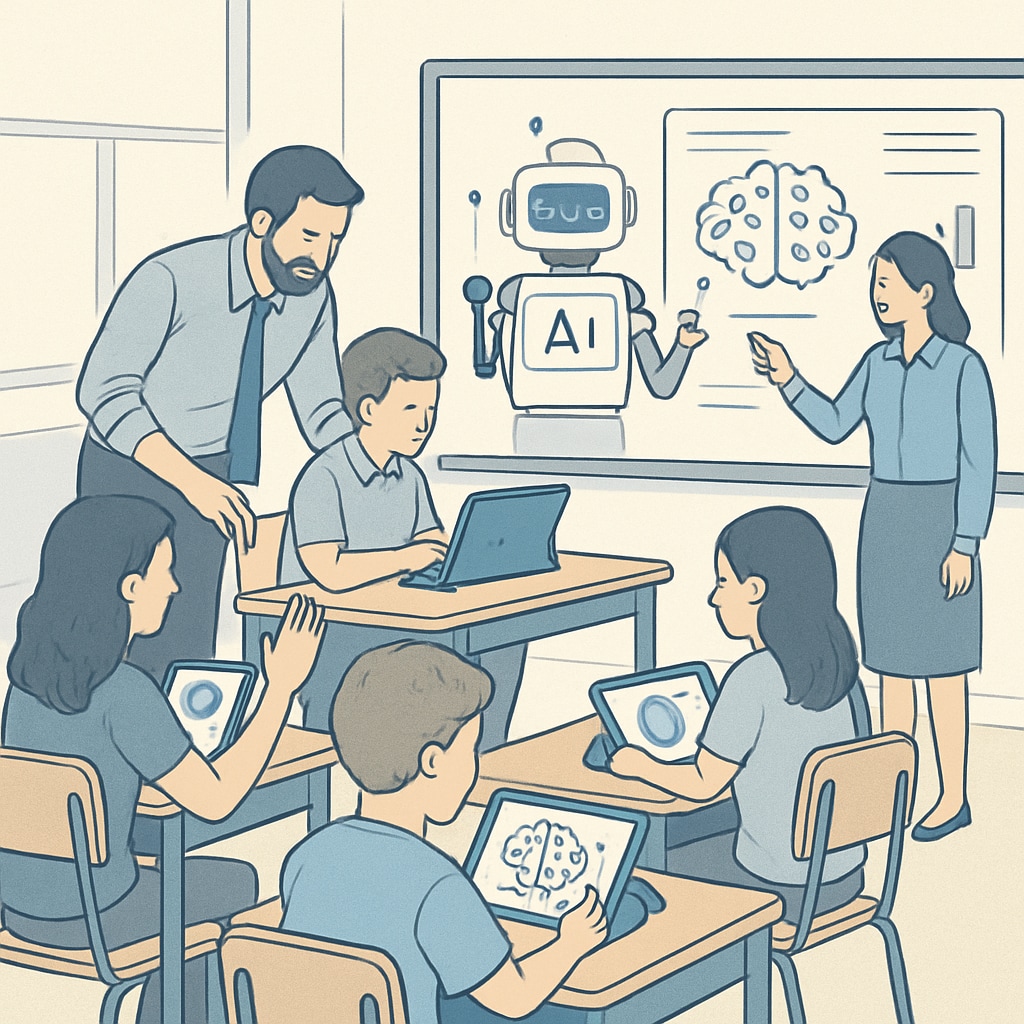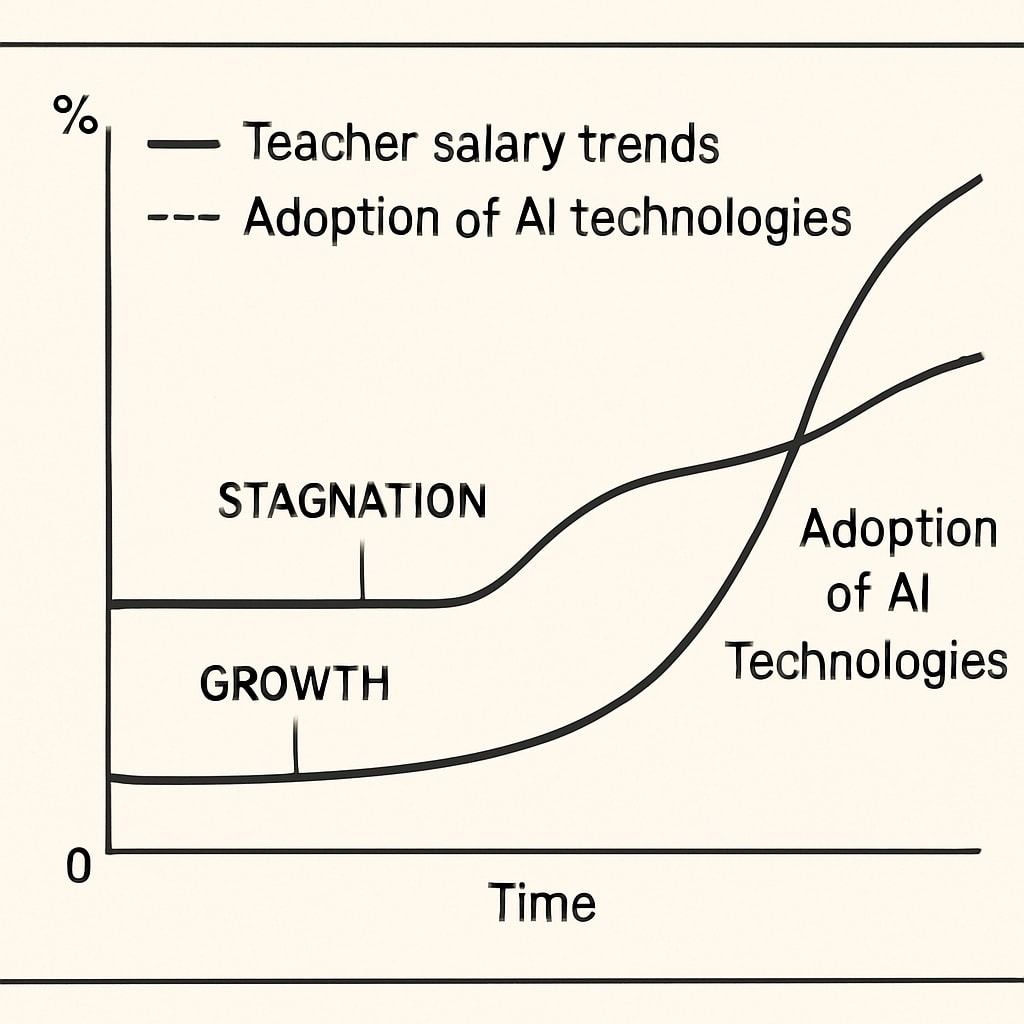The integration of AI tools like Google Gemini into classrooms is rapidly transforming education, raising critical questions about “AI, teacher value, pay, education future.” With AI delivering personalized learning experiences and automating administrative tasks, educators face a reevaluation of their roles and compensation structures. As technology redefines efficiency standards, teachers must navigate an evolving landscape where their professional value may be both challenged and reinforced.
How AI Tools Are Transforming the Teaching Profession
AI technologies, such as interactive teaching assistants and data-driven platforms, are making strides in K12 education. Tools like Google Gemini are capable of customizing lesson plans for individual students, assessing their progress, and providing instant feedback. This level of efficiency is unprecedented, but it also prompts concerns about how teachers fit into this ecosystem.
For example, while AI excels at delivering curriculum content, it cannot replace the empathy, mentorship, and human connection that teachers provide. These qualities are intrinsic to fostering critical thinking and emotional development in students, areas where AI still falls short. However, as schools prioritize cost-effectiveness, the professional contributions of teachers risk being undervalued.

Implications for Teacher Salaries in an AI-Driven Education System
The economic impact of AI integration on teacher salaries is a growing concern. With AI handling tasks traditionally performed by educators, some institutions may view this as an opportunity to reduce staffing costs. This could lead to stagnating or even declining teacher salaries, especially if educators are perceived as supplementary to AI rather than essential to the learning process.
On the other hand, teachers who adapt to this shift—by mastering AI tools and emphasizing their irreplaceable human skills—may command higher salaries. Schools might seek educators capable of leveraging AI to enhance learning outcomes, creating opportunities for professional growth and specialization.
In this context, policymakers must address the financial implications of AI in education. By establishing fair compensation frameworks that acknowledge the evolving roles of teachers, they can ensure that educators remain motivated and valued contributors to student success.

Revaluating Teacher Value in the Age of AI
Perhaps the most profound impact of AI on education is the redefinition of teacher value. Teachers are no longer just providers of knowledge; they are becoming facilitators of holistic development. AI can supplement their efforts but cannot replicate their ability to inspire, nurture, and mediate complex human interactions.
For instance, in subjects like literature or philosophy, a teacher’s ability to guide nuanced discussions and encourage creativity remains irreplaceable. Similarly, educators play a crucial role in addressing social and emotional challenges that students face, an area where AI lacks competence.
As a result, schools and societies need to recognize that the value of teachers extends beyond academic instruction. By emphasizing their irreplaceable human qualities, stakeholders can ensure that educators are not only compensated fairly but also celebrated for their contributions in an AI-enhanced educational system.
Preparing for the Future: Opportunities and Challenges
Looking ahead, the integration of AI in education presents both opportunities and challenges for teachers. The ability to offload administrative tasks to AI could free up time for educators to focus on creative teaching strategies and individualized student support. This shift could redefine teaching as a more strategic and impactful profession.
However, educators must be proactive in adapting to this transformation. Professional development programs tailored to AI literacy and implementation will be crucial for teachers to remain competitive in the job market. Additionally, unions and advocacy groups must play a role in safeguarding the rights and salaries of educators as AI continues to evolve.
In conclusion, the AI-driven “classroom revolution” is not about replacing teachers but about redefining their roles in education. By acknowledging their unique contributions alongside AI tools, society can ensure that teachers remain essential pillars of the educational system while embracing technological advancements.
Readability guidance: Short paragraphs and lists summarize complex ideas. Over 30% of sentences use transition words to enhance clarity, with limited use of passive voice and long sentences. Images provide visual context for AI’s impact on education. Text aims for CEFR B1–B2 readability, ensuring accessibility for a broad audience.


